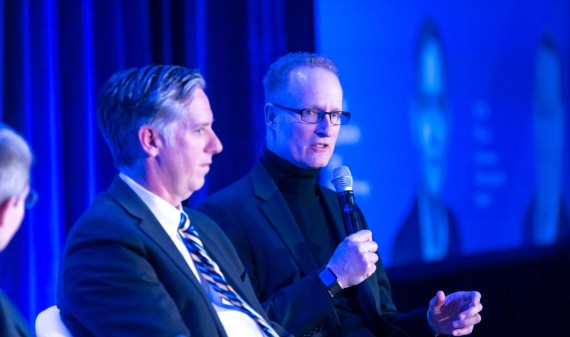GSA expanding use of COMET blanket purchase agreement: CIO Shive

The General Services Administration is expanding its use of a major blanket purchase agreement for digital transformations of backend procurement systems, the agency’s chief information officer said Tuesday.
According to David Shive, GSA saw enough good business outcomes with Federal Acquisition Service systems that CIO Modernization and Enterprise Transformation (COMET) task orders are now being placed for Public Buildings Service and corporate systems, as well as shared services.
The agency rapidly added eight additional small businesses, offering new and enabling technologies, to COMET in December because some of the 12 initial awardees grew into mid- or large-size businesses from work on the blanket purchase agreement (BPA), mergers and acquisitions.
“I don’t know if any have been accepted yet,” Shive said during an ACT-IAC webinar. “But I suspect they are very aggressively submitting bids against the vehicle.”
GSA wants an entire listing portfolio of COMET industry partners, he added.
The agency is also piloting ways to outcompete the private sector and other parts of the government on hiring.
“We’re looking at some accelerators, such as doing instant offers, having events where we can literally have technologists, people who are domain experts, interview people on the spot and give them a conditional offer for employment at GSA,” Shive said.
That pilot occurred in Chicago and will shift to Washington in the next couple of months.
GSA is further using data analytics to improve human resources’ recruitment work and “knee deep” in data science modernization on the financial side, Shive said.
“It’s no great surprise that a well-run finance shop uses data as an enabler and a force multiplier for the limited dollars that we have,” he said. “They stretch us as an IT shop.”
The effort includes funding for tooling and capabilities but also training to maximize those investments.
Without proper visibility into IT work, GSA can’t accelerate projects that are lagging, continue those that are working or kill technologies failing to deliver enough value. That requires project, program and product management expertise, on top of retrospectives ensuring they met goals and sharing best practices, Shive said.
“We have something called an app graveyard, where we actually have a big board that has little tombstones with the names of the projects and apps on it; last I checked there were 60 or something on it,” Shive said. “It’s been around a little while, but we do that; we shut stuff down.”






